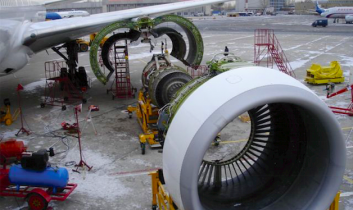The Regs: Data for Major Repairs and Modifications
The following abbreviations are used here and are often used in the aviation industry. You may come upon them in your day-to-day work.
CAR – Canadian Aviation Regulation which is a law of Canada; CofA – Certificate of Airworthiness; CAA – Civil Aviation Authority; EASA – European Aviation Safety Agency; FAA – Federal Aviation Administration; FAR – Federal Aviation Regulation (USA); SMS – Safety Management System; STD – TC approved standard including Airworthiness Manual; TC or minister or “tower of darkness” or “the Tower” indicates Transport Canada headquarters in Ottawa; TC Holder – Type Certificate Holder/Owner and usually the manufacturer.
Below you will note that the italics denote a quotation. I do this in addition to quotation marks because of the large amount of material that I quote. Please be aware of this as you read on.
In my column I often refer to the FAA or refer to the FARs. This is because most aircraft operating in Canada still have ties that bind them to FAA requirements and because most cross border activities such as imports, exports and commercial operations involve the FAA and the FARs.
Recently two of my clients asked me questions regarding major and minor repairs and the data required for them. This is an area where, in some cases, the FARs may be involved. The words “major” and “minor” used for describing repairs and modifications have been around for a long time. In the olden days before the CARs were enacted we used these but there were a variety of related definitions.
One popular opinion stated, “If a repair involved primary structure then it was a major repair.” We had no official definition of “primary structure” but knew it must have been important and was usually related to a big project. In those days there was always much confusion and conflict about their meanings and there still is today.
As with some other words and terms we have used and do use, these are now legally defined but the definitions can lead us into more chaos.
For many aviation legal definitions now, we refer to CAR 101.01(1), which provides legal definitions applicable to all the CARs. The first one I quote is “primary structure”.
“Primary structure” means a structure that carries flight, ground or pressure loads; (structure primaire)
Those of you involved in maintenance don’t hear much of this term now. It is now mainly used for the purpose of design certification.
The next definition we need is “repair”:
“Repair” – means the rectification of deficiencies in an aeronautical product or the restoration of an aeronautical product to an airworthy condition; (réparation)
Note that there are two parts to the definition that seem to say the same thing in different ways. We will often read the term “aeronautical product”. For that definition we go to CAR 521.01, which states:
“Aeronautical product” means an aircraft, aircraft engine, aircraft propeller or aircraft appliance or part, or a component part of any of those things.
That includes all bits and pieces of every aircraft.
Referring back to CAR 101.01(1), we examine the definition of the term “major repair”:
“Major repair” – means a repair to an aeronautical product in respect of which a type certificate has been issued, that causes the aeronautical product to deviate from the type design defined by the type certificate, where the deviation from the type design has other than a negligible effect on the weight and centre-of-gravity limits, structural strength, performance, power plant operation, flight characteristics or other qualities affecting the aeronautical product’s airworthiness or environmental characteristics; (réparation majeure)
Note the words “type certificate”. Type certificates are issued to most aircraft types but these do not include amateur built aircraft, military aircraft or experimental aircraft.
The first part of this definition states that to be a major repair, it must cause a deviation to the type design. That terminology can cause confusion. If an aircraft receives damage such a forklift hole in a fuselage skin, the aircraft can be restored in two ways.
The first restoration method involves cutting out the damage and installing a patch. That patch is a deviation from the type design. The pieces installed are not in the aircraft or component parts manual.
The second restoration method involves replacing the damaged parts with new parts from parts manual. With no deviation to the type design, this restoration qualifies as a repair but does not qualify as a major repair no matter how many parts are replaced.
 The second part of the definition tells us that the repair must cause “other than a negligible effect” on the stated qualities. If a repair is well designed and installed and it has a negligible effect on those qualities then it does not meet this definition of major repair. I dispute this definition below.
The second part of the definition tells us that the repair must cause “other than a negligible effect” on the stated qualities. If a repair is well designed and installed and it has a negligible effect on those qualities then it does not meet this definition of major repair. I dispute this definition below.
Since the CARs do not define the word negligible, we go to the Oxford dictionary which states this: “negligible – of very little importance or size and not worth considering”.
To provide a contrast I refer to FAA FAR Section 1.1 that provides the following definition:
Major repair means a repair:
(1) That, if improperly done, might appreciably affect weight, balance, structural strength, performance, powerplant operation, flight characteristics, or other qualities affecting airworthiness; or
(2) That is not done according to accepted practices or cannot be done by elementary operations.
This FAR definition uses the terms “improperly done”, “might appreciably”, “accepted practices” and “elementary operations”. Since I do not try to explain the FARs, I’ll leave this with you to think about.
Moving on to our next related definition in CAR 101 we examine the meaning of the words “Major Modification”:
“Major modification” – means an alteration to the type design of an aeronautical product in respect of which a type certificate has been issued that has other than a negligible effect on the weight and centre-of-gravity limits, structural strength, performance, power plant operation, flight characteristics or other qualities affecting its airworthiness or environmental characteristics; (modification majeure)
This seems to be similar to the definition of the term “major repair”. The difference that I see is the use of the words “deviation” and “alteration”. That makes it as clear as the lower Fraser River. That’s muddy.
If the above doesn’t confuse you other than negligibly or appreciably then I applaud you. To understand the above clearly you probably meet one of the two following criteria:
a) Have gone to university and MAJORed in government bureaucratese, (another great word I invented)
b) Have been a MAJOR in the armed forces military intelligence
Next we examine the data that the CARs require for repairs and modifications.
CAR and STD 571.06 define the data requirements into three categories; acceptable data, approved data and specified data. For major repairs and major modifications CAR 571 states the regulation as follows:
CAR 571.06 (1) a person … shall ensure that the major repair or major modification conforms to the requirements of the relevant technical data
(a) that have been approved or the use of which has been approved within the meaning of the term “approved data” in section 571.06 of the Airworthiness Manual; or
(b) that have been established within the meaning of the term “specified data” in section 571.06 of the Airworthiness Manual.
That part is the regulation. It refers to the Airworthiness Manual meaning STD 571.06(1). The STD defines approved and specified data as follows:
“approved data” – includes:
(a) type certificates, supplemental type certificates, part design approvals, Canadian technical standard order (CAN-TSO) design approvals or repair design approvals, including equivalent foreign documents which have undergone the type design examination process set-out in Subpart 521 of the CARs or are otherwise accepted in Canada; and
(b) other drawings and methods approved by the Minister or a delegate ….
That covers approved data. The next category option is specified data. This listing is where the Minister of Transport actually specifies the data:
“Specified data” – is information contained in authoritative documents, which, although not approved by the Minister, has been specified by the Minister as appropriate for the purpose of major modifications and major repairs, in conformity with section 571.06 of the CARs. The following are examples of specified data:
(a) drawings or methods described or referenced in Airworthiness Directives; This is because Airworthiness Directives generally refer to the documents listed in example (b) as follows:
(b) data issued by the manufacturer or type certificate holder of the aircraft, component or appliance, such as modification orders, service bulletins, or engineering orders, which include a statement of approval by the applicable regulatory authority or a delegated representative of such an authority ….
Once again the minister did his utmost to confuse us. If the document includes a statement of approval, then logic would demand that it would be approved. I will send an enquiry about this counter intuitive section into the peppermill of the Tower of Darkness where it will probably disappear because there is nobody in Ottawa that can explain it. The next example is:
(c) Manufacturer’s Structural Repair Manuals; Most of these SRMs were written when the rules were relatively loose and they were not formally approved. Now days, in some of these manuals, you will find sections that are approved by the regulatory authority.
The last example in the listing is our old friend AC 43.13:
(d) FAA Advisory Circulars AC 43.13-1 and AC 43.13-2, subject to the following conditions:
(i) the aircraft is a small aircraft, and the alteration does not affect dynamic components, rotor blades, structure that is subject to pressurization loads, or the primary structure of a rotorcraft;
(ii) the alteration does not affect an existing limitation (including the information contained on mandatory placards) or change any data contained in the approved sections of the Aircraft Flight Manual, or equivalent;
(iii) the data are appropriate to the product being altered, and are directly applicable to the alteration being made; and,
(iv) the data are not contrary to the aircraft manufacturer’s data.
To use this AC43.13 for a major repair or modification, all of those conditions must be met. Item (iii) means the repair or modification must be exactly as stated in the AC43 wording and drawings.
That is the end of the data requirements for major repairs and modifications. Next we look at the requirements for, what we call, minor repairs and minor modifications. First we have the regulation that states:
CAR 571.06(2) … a person who signs a maintenance release in respect of a repair or modification, other than a major repair or major modification, shall ensure that the repair or modification conforms to the requirements of the relevant technical data within the meaning of the term “acceptable data” in section 571.06 of the Airworthiness Manual.
Now we go to the STD 571.06(1), which states:
“Acceptable data” – includes:
(a) drawings and methods recommended by the manufacturer of the aircraft, component, or appliance;
(b) Transport Canada advisory documents; and,
(c) advisory documents issued by foreign airworthiness authorities with whom Canada has entered into airworthiness agreements or memoranda of understanding such as current issues of Advisory Circular 43.13-1 and -2 issued by the FAA, Civil Aviation Information Publications (CAIPs) issued by the Civil Aviation Authority (CAA) of the United Kingdom, or Advisory Circular, Joint (ACJs) issued by the Joint Aviation Authority (JAA) or Acceptable Means of Compliance (AMC) issued by the European Aviation Safety Agency (EASA); and,
Note that this paragraph includes AC 43-13 but without the conditions applicable to specified data above.
(d) drawings and methods found appropriate by a delegate …
This is another strange statement. Delegates including DARs and DERs normally approve data.
The STD 571.06 repeats the CAR but adds in another couple of sentences as follows:
(a) … A statement of “No technical objection”, or similar wording, by the manufacturer does not constitute “approved”, “acceptable”, or “specified” data and shall not be used without further approval by the Minister.
This is because people who needed data for major repairs had been sending their proposed repair off to the manufacturers for a “blessing”. The manufacturers, usually the sales departments, sent back messages including the wording “no technical objection” which inferred approval.
Information Note: Additional guidance for the classification of modifications and repairs can be found in Appendix A of this standard
That takes us to STD 571 Appendix A. In that document TC provides additional assistance in choosing data. STD 571.06 goes on to address parts made for repairs and modification but I must reserve comments on that for another issue of AMU Magazine.
I have notified TC of errors in the regulations without successful effect. Several years ago she replied to me that they will get around to it. As we all know, Round Tou-its are a dime-a-dozen and we all know what inflation has done to the dime. No amount of poking and prodding will get the Minister of Transport to take care of his/her regulatory structure. A great example of this is my past efforts to notify TC of goof ups in the TC internet site that currently notifies us that:
Please be advised that there was no scheduled amendment for December 2012 (2012-2). The next amendment is planned for the end of 2013 (2013-1).
When I refer to the Minister of Transport, I consider that this is not a person but a position. The person in the position may be good, bad or a fishhead. Whatever kind of person they be, they are placed into the position, and shortly later, out of it before the chair is warm.
That’s it folks. Until next issue, be good despite SMS. Do your best to keep aviation safety from going into the same SMS hole as our Canadian rail system, also regulated by TC. Ta-ta for now and beware of the fishheads.
Please be aware that I am not a lawyer or legal expert. What I write in my column is not legal advice nor legal opinion. If you face a legal issue, you must get specific legal advice from a lawyer and preferably one with experience in the aviation matters in your own country/state.
About The Author
NORM CHALMERS worked with Transport Canada as an Airworthiness Inspector for 25 years. Before this, from 1967 to 1983, he worked in the aircraft maintenance industry in and around Western Canada and in the Arctic. His industry experience includes the operational maintenance of normal and commuter category aircraft and smaller transport category aircraft in the corporate sector as well as several years working in major repairs in the helicopter sector. As an Airworthiness Inspector, he has been responsible for most duties related to the position, including the approval of all aspects of maintenance, manufacturing, training, and responsibilities related to distribution organizations. Norm now operates Pacific Airworthiness Consulting; www.pacificairworthiness.ca
View all articles by Norm Chalmers.
















































